“A young boy scout once asked me which was my favourite grave,” smiles Dick Richards, a volunteer guide for the Commonwealth War Graves Commission, as he stands amidst the rows upon rows of immaculately kept white Portland headstones in Botley Cemetery. “I wasn’t ready for that question. But when I thought about it, I had to say this one.”
He points to one of the graves, marked at the top with the name Robert Theodore Osmund Fleeton, and at its base with just ‘OSSIE, ALWAYS BELOVED NEVER FORGOTTEN’.
“Ossie came over from Cork to join the Royal Flying Corps, aged 16,” explains Dick. “After signing up on 16th of April 1917 he developed meningitis and died in hospital ten days later. He’s the youngest one here. Tragic really.”
The place is full of stories like Ossie’s. Memorials for men and women who died near here; some did make it into action abroad, returned to be treated in Oxford, later dying of their wounds. Many contracted fatal illnesses. Some perished in accidents. All were casualties of war: 156 from the First World War and 516 from the second. I’d always associated these places, with their ranks of gravestones lined up as if on parade, with the old battlefield sites of France and Flanders. But here we are in Botley, not the only CWGC site in Oxford but by far the largest.
I have to admit to being totally unaware this place existed until contributing photographer John Milnes, whose late wife Rosemary is buried on the city council run side of the cemetery, showed me pictures and suggested we visit. It’s a pleasant cycle along the river from Folly Bridge, through Osney Industrial Estate and then down the tracks that lead across open fields and over streams to North Hinksey Lane. Pass between the stone gateposts and you can’t miss it, behind the chapel and a through a gap in the beautifully trimmed hedge acting as a natural boundary line separating the Commonwealth graves from their more higgledy-piggledy neighbours. Though the A34 roars along the west side, a tall row of horse chestnut trees now in full leaf means that you only catch a glimpse of the cars and lorries as they flash past. And as is the way with places of remembrance it isn’t long before you fail to notice the noise at all.
As well as Dick we’d come to meet Steve Stewart, Regional Manager of the Commission for the Southwest. Botley Cemetery was first chosen as a place to bury casualties from the First World War because of its proximity to the 3rd Southern General Hospital, he tells us, which had set up its base in Oxford. With students away fighting on the Western Front, spaces like the Examinations Schools on the High Street (a portrait of the Kaiser, a former honorary graduate was swiftly removed) and Somerville College were, within ten days of war being declared, transformed into hospital wards. The first train load of 150 injured soldiers arrived at Oxford station from Southampton on September 13, 1914. During the Second World War, Botley was a designated as an official RAF cemetery, used by the 33 bases stationed in Oxfordshire for Britain’s air offensive against Germany and occupied Europe.
These special cemeteries were designed to be uniform and regimented both in Europe and here, says Steve, who, as one might expect from an ex-serviceman, has all the facts and figures at his fingertips. All headstones are set at 81 centimetres above the turf, which is edged in straight lines a maximum of 10-15 centimetres at the rear and 40-55 centimetres at the front. Leslie Macdonald Gill created a unique upper-case typeface created to be read easily and used to inscribe the name, rank, service number, religious emblem if so desired and a personal inscription from the family or one chosen from a list put together by Rudyard Kipling, a man with his own personal tragedy. Kipling lost his only son John at the Battle of Loos in 1915 so knew about grief. Other famous names were involved too – Edwin Lutyens designed the Stone of Remembrance, Sir Reginald Blomfield the Cross of Sacrifice, and Sir Edward Maufe a domed shelter where a plan of the site and the register of burials is kept. Not all the war cemeteries have them, but Botley has all three.
The first cemeteries in Europe were designed to look as much like an English garden as possible to remind people of home. The idea was copied here, repeat planting of the ‘trumpeter’ rose in between graves, with low lying plants in front to stop the soil splashing up and to ensure the inscriptions are not obscured. A clever idea which I fully intend to replicate on my parent’s grave. Everything has been considered. Everything is perfect, beautifully maintained by a small team of dedicated staff and contractors, many of whom have been in attendance for years.
At first I thought these were memorials, names remembered, but Dick informs me that under each white headstone there is a casualty. In the World War 1 plot, we find four Germans. One was a stretcher bearer. Another a civilian called Hans Sach, who became ill while interred in a prisoner of war camp in Dorset, was brought to Oxford for treatment where he died of pneumonia. There are 33 more of his compatriots from the Second World War, with different shaped headstones, facing the rest as if still at war. There are Italians and Belgians, Czechs, and Polish and the only Greek soldier buried in the UK. Theodorus Lagos, was from Paros in the Cyclades. After sustaining a head wound, he’d ended up at St Hugh’s College, where leading neurologists treated people for head injuries. He died in October 1944. His epitaph reads, ‘Any land is a grave for prominent men.’
There are so many sad stories. Theo Seale was in preparation to land by glider on D Day as part of Operation Mallard, when on 1st June 1944 he was killed in a freak accident whilst arming anti-tank grenades. He was 23. A row of photographs marks the graves of a crew of six pathfinders. Airmen selected for their accuracy they were sent in front of bomber aircraft to drop target indicators. Returning to base they discovered one flare still in the plane, which ignited as they came into land. One of the team lived to tell the tale, but felt survivor’s guilt for the rest of his days.
You cannot fail to be moved by the spectacle of the war graves at Botley Cemetery. So different in style to the pretty wildness of St Sepulchres or Holywell in the city centre. But so definitely worth a visit.
“There can be no more potent advocates for peace upon earth than this massed multitude of witnesses to the desolation of war,” was a Kipling line written for George V as he accompanied him around the sites set up by the Commonwealth War Graves Commission. I’ll second that.
On Wednesday 15th May at midday, the Torch of Commemoration will pass through Botley cemetery on its way to Normandy to mark the 80th anniversary of D Day.
Contributing photographer John Milnes.
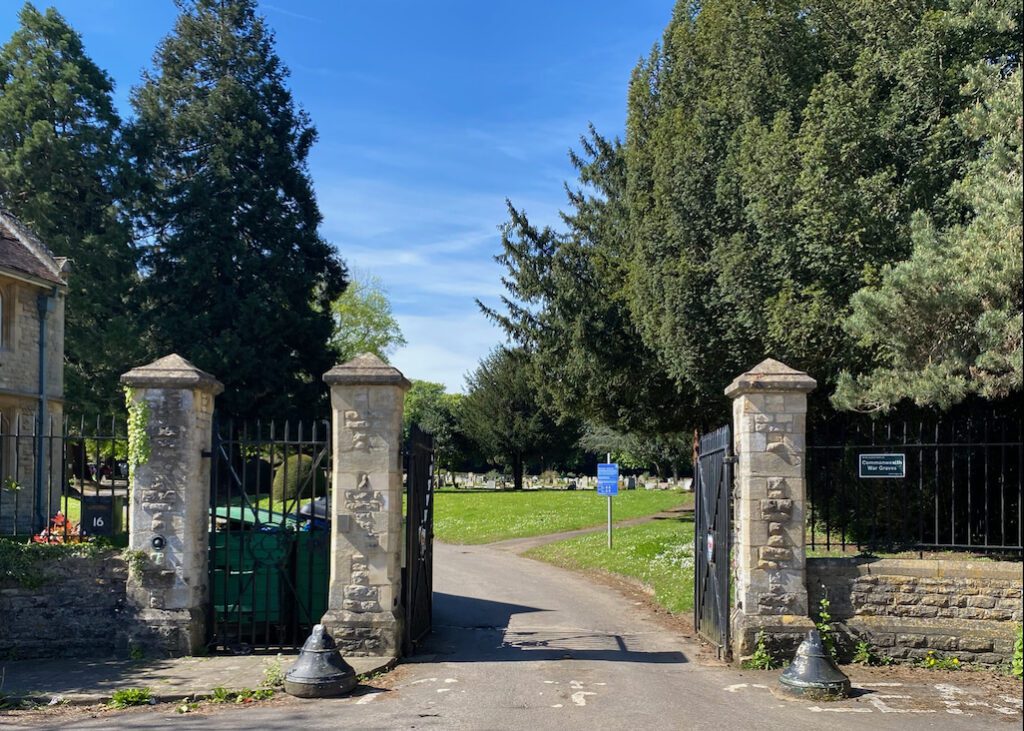
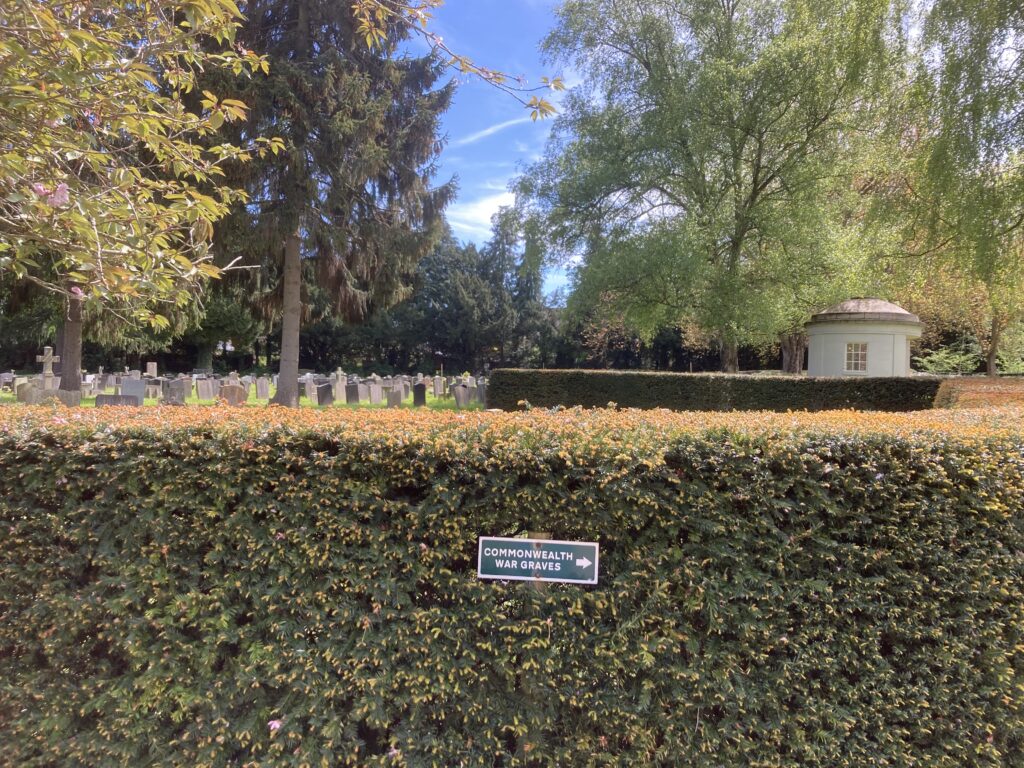
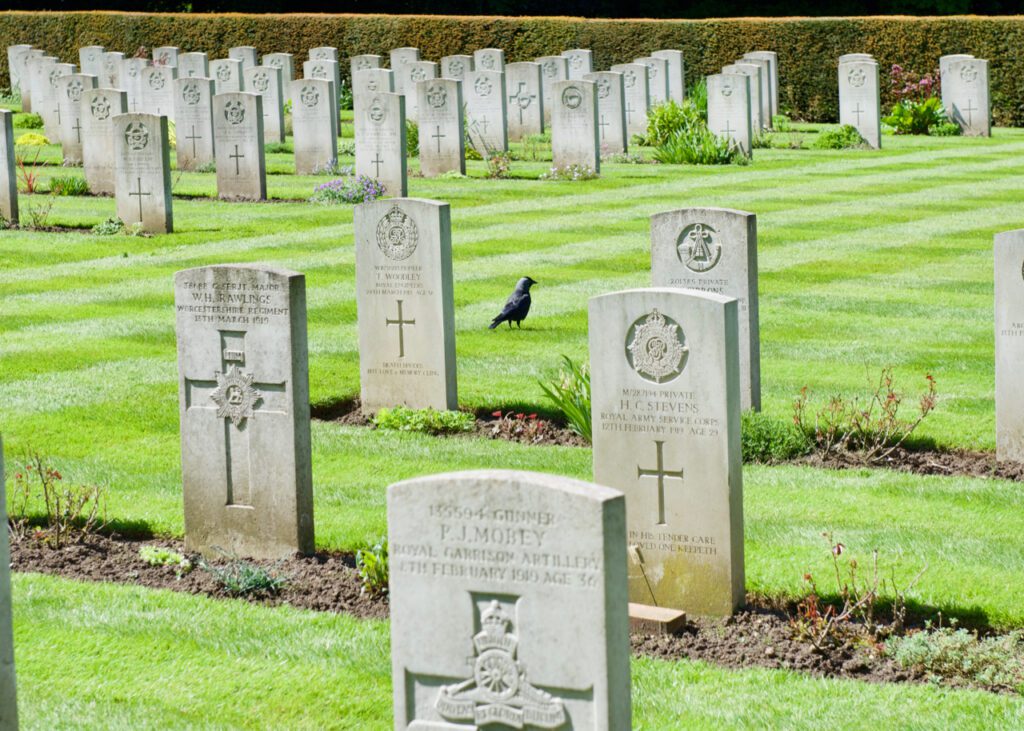
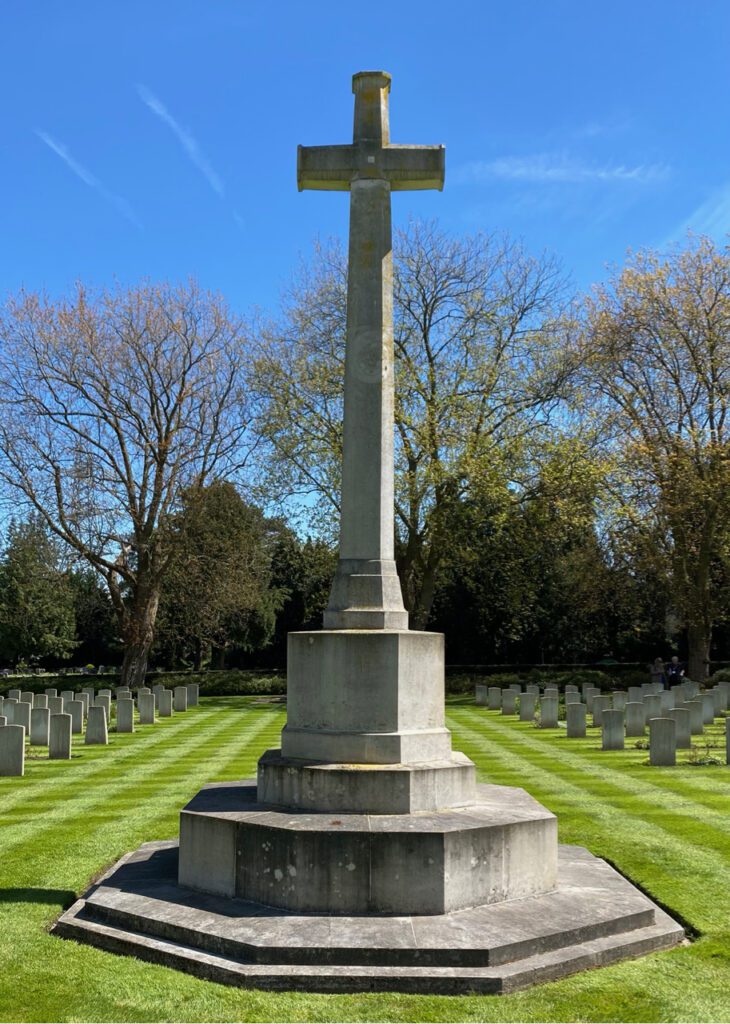
The Cross of Sacrifice designed in 1918 by Sir Reginald Blomfield. It is present in Commonwealth war cemeteries with more than 40 graves.
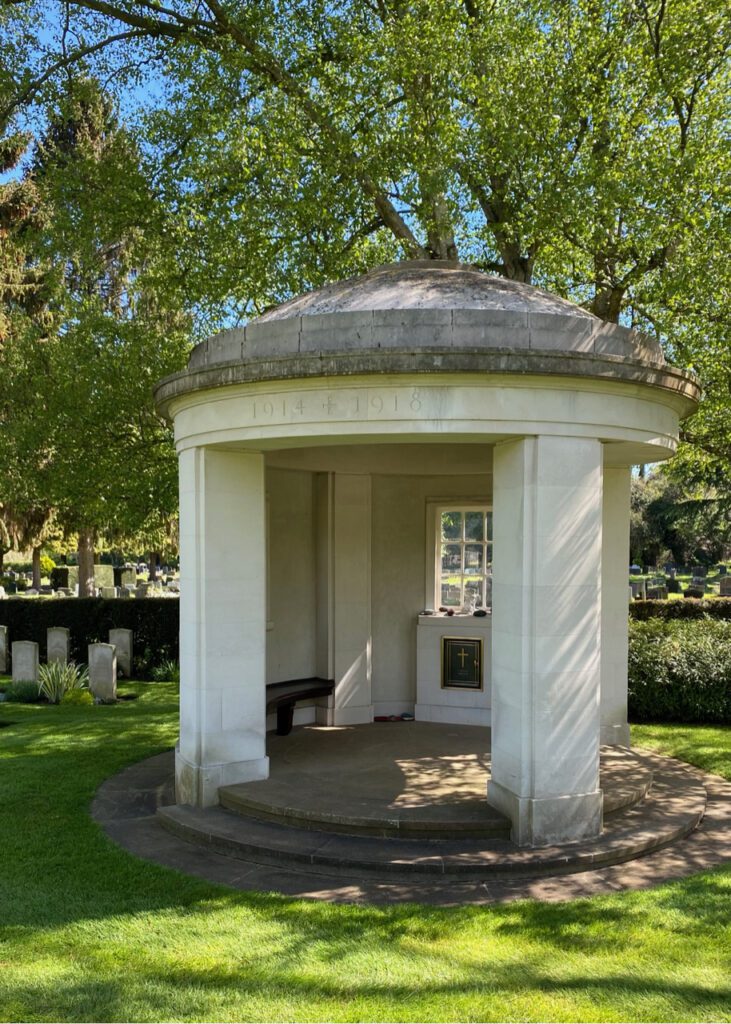
The domed shelter designed by Sir Edward Maufe. A place for quiet contemplation.
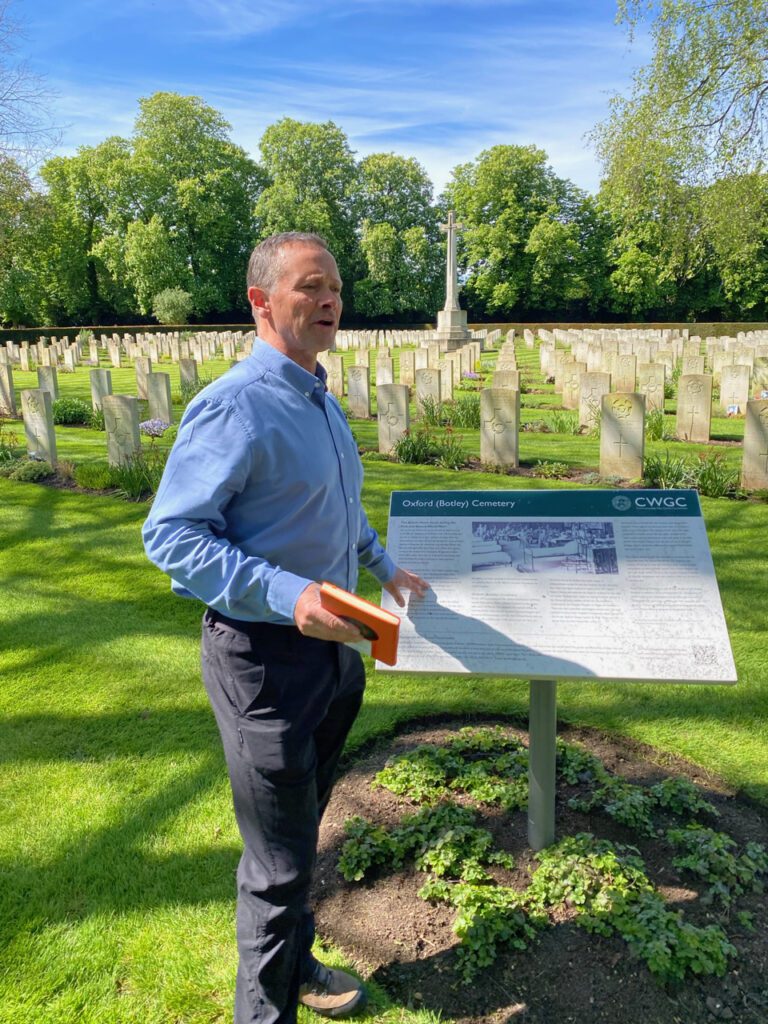
Steve Stewart, Regional Manager for the Southwest, Commonwealth War Graves, an area that stretches from Oxfordshire to the Isles of Scilly, taking in eight counties and over 20,000 casualties buried in over 2,000 sites.
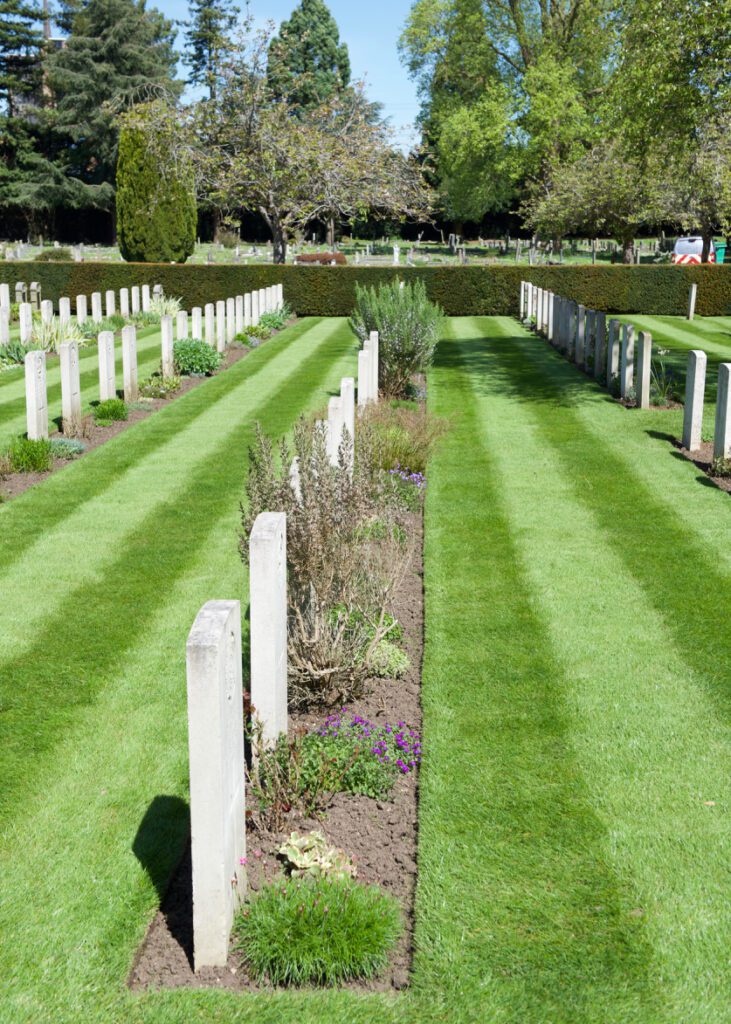
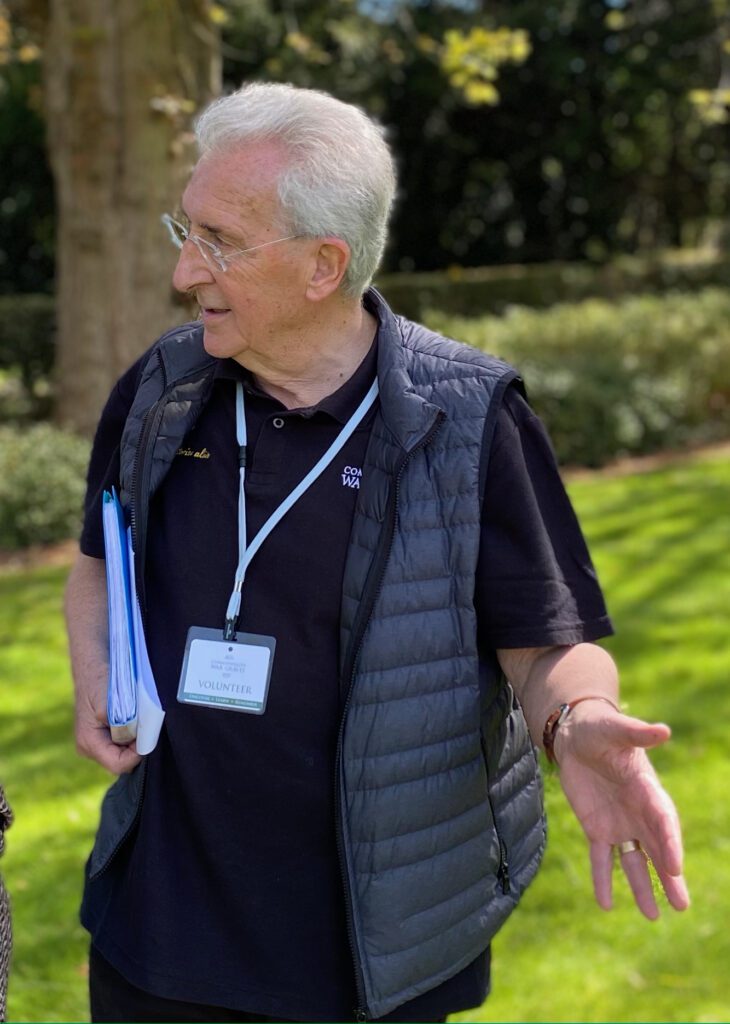
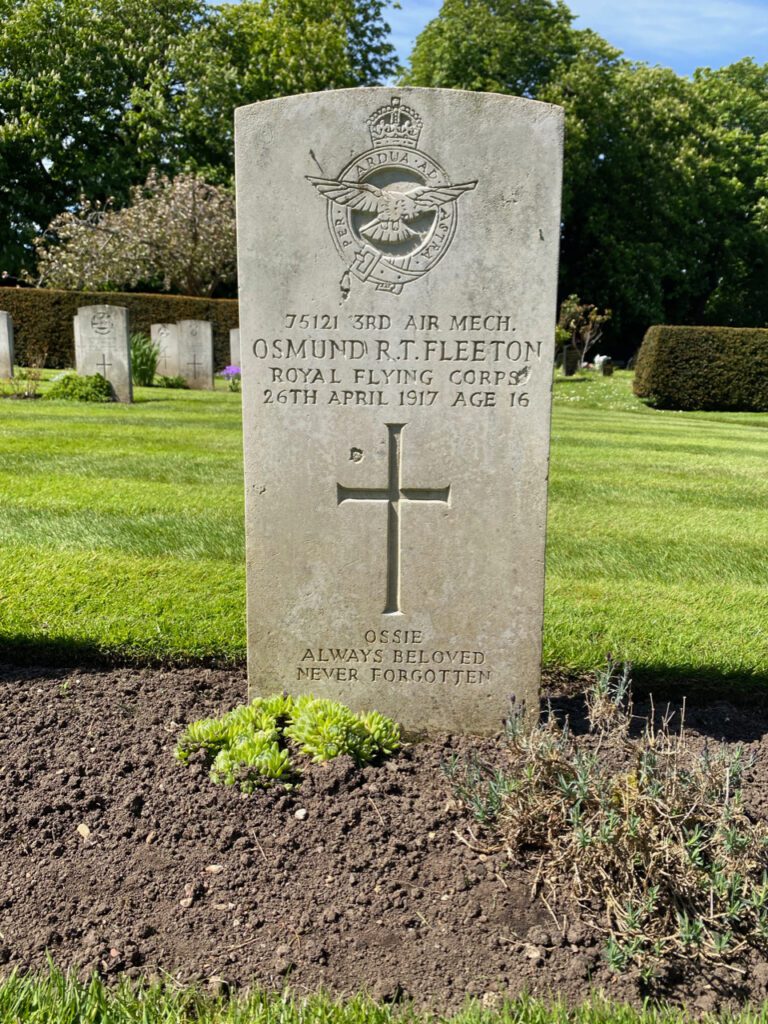
Dick Richards, one of the Commission’s 2,000 volunteers across the UK, shows us Ossie’s marker stone. At 16 he is the youngest here.
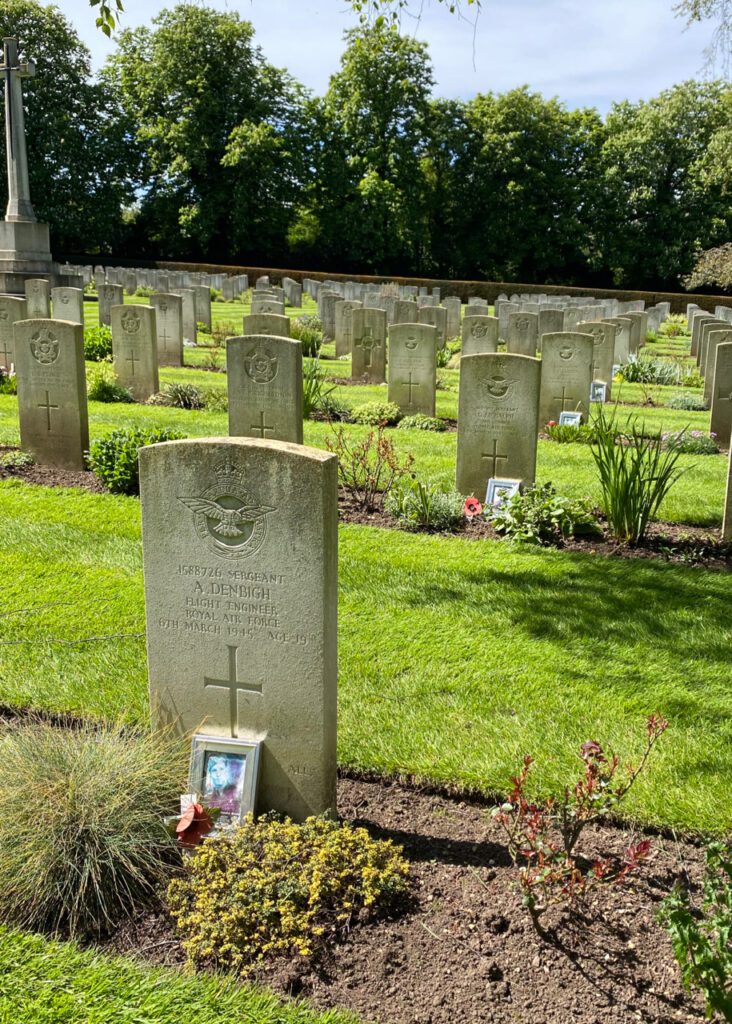
The graves of the six pathfinders who died on their way home, each carries a photograph of the airman.
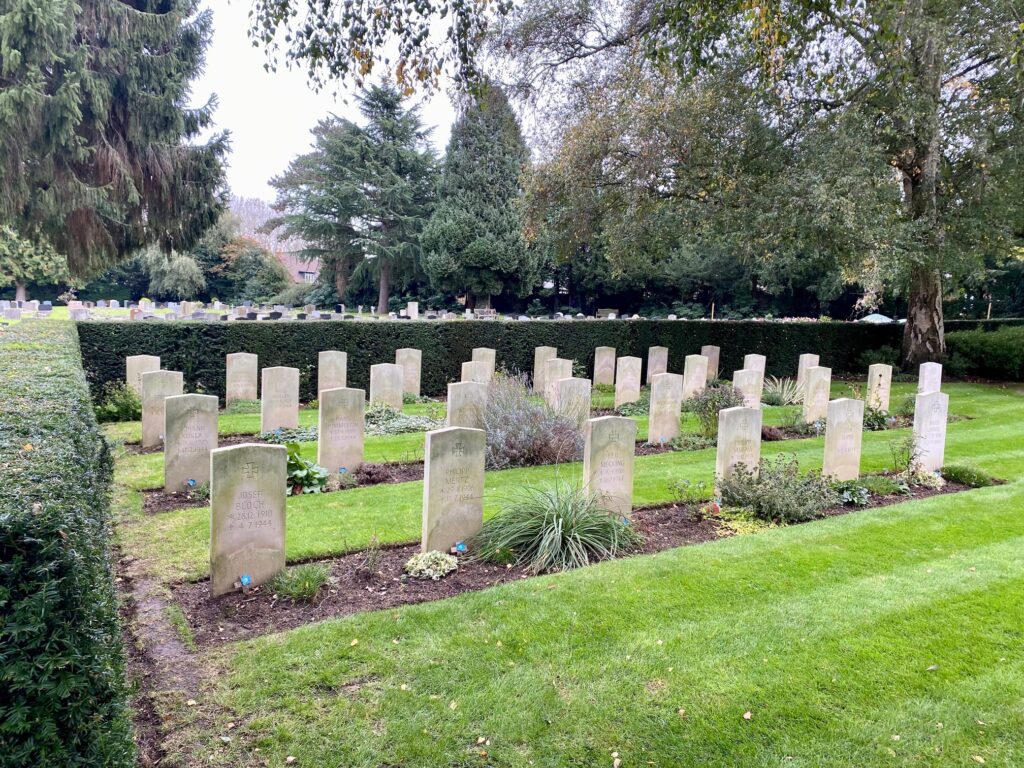
The German plot from World War 2 – 33 prisoners of war who died of injury or illness. When the cemetery was set up there were no headstones just white wooden crosses. And there was no hedge just an open plot. In the 1950’s the War Graves commission spruced the place up – and put in the hedge. The headstones above were turned around, as otherwise they would have been right up against the hedge and you wouldn’t have been able to read the inscriptions. So these are in fact not headstones but ‘feet stones’.
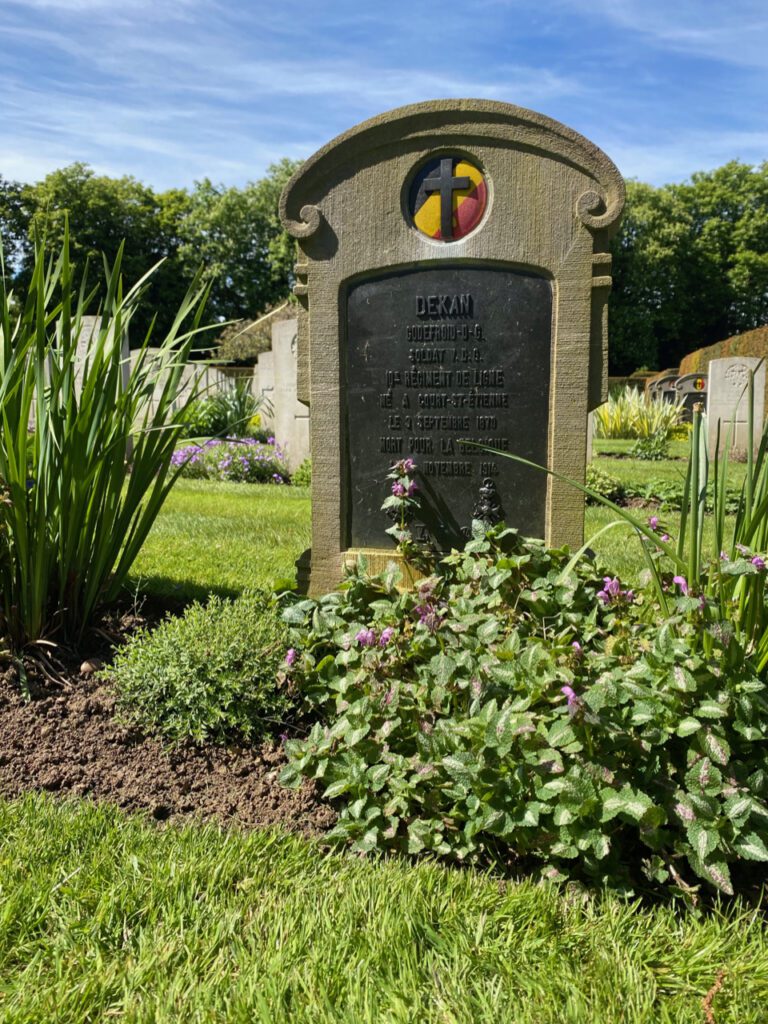
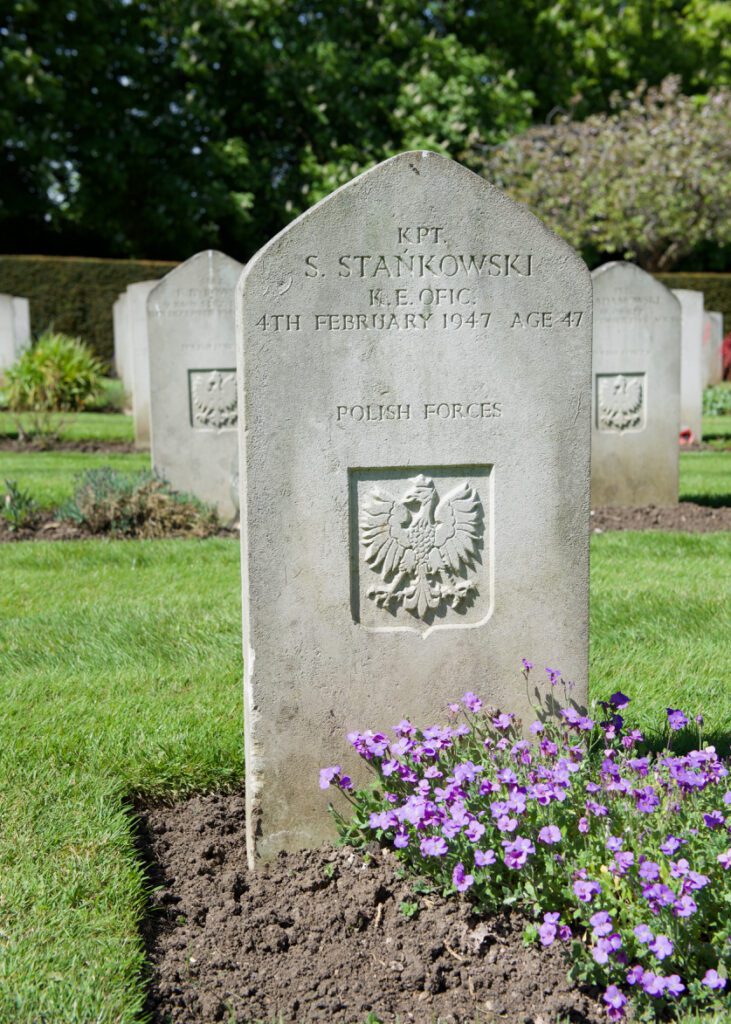
A stone for a Belgian soldier from WW1 (left) and for a Polish soldier from WW2 (right)
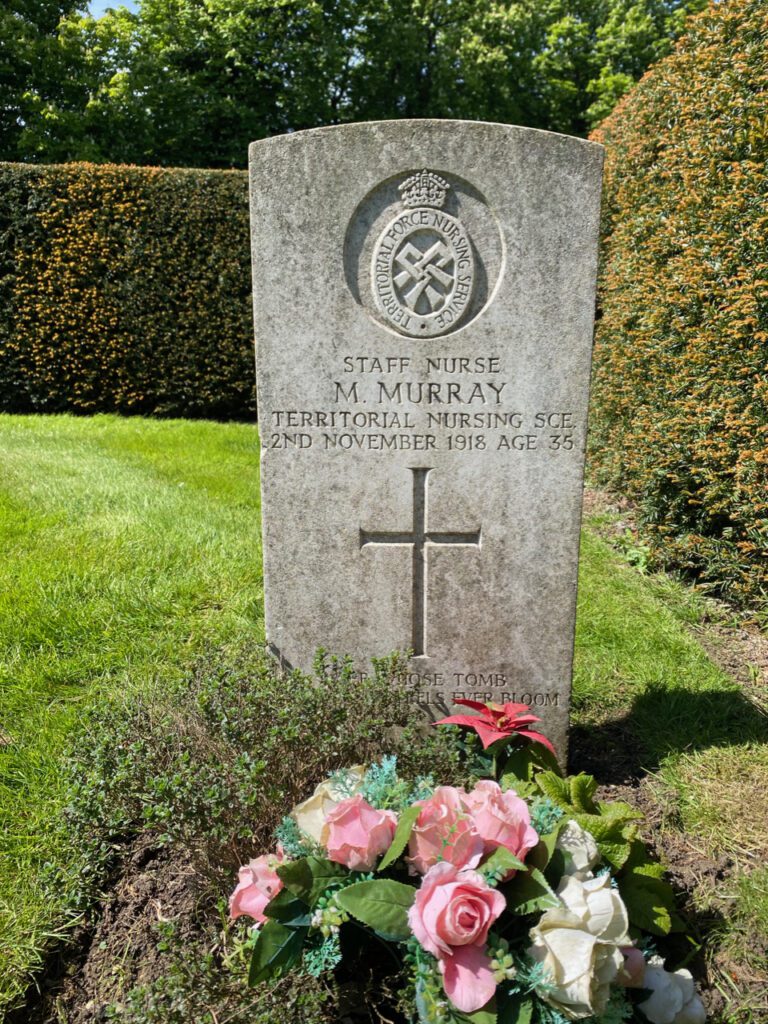
A marker for Nurse Mabel Murray, a member of the Territorial Force Nursing Service posted to Oxford and one of only two women buried in the cemetery. She died of what became known as the ‘Spanish flu’ in November 1918. Her grave appears to stand in its own plot, the theory being that the space had been designated for other nurses who were ill at the same time but recovered.

Nurses from the 3rd Southern General Hospital in the Examination Schools in Oxford during WW1.
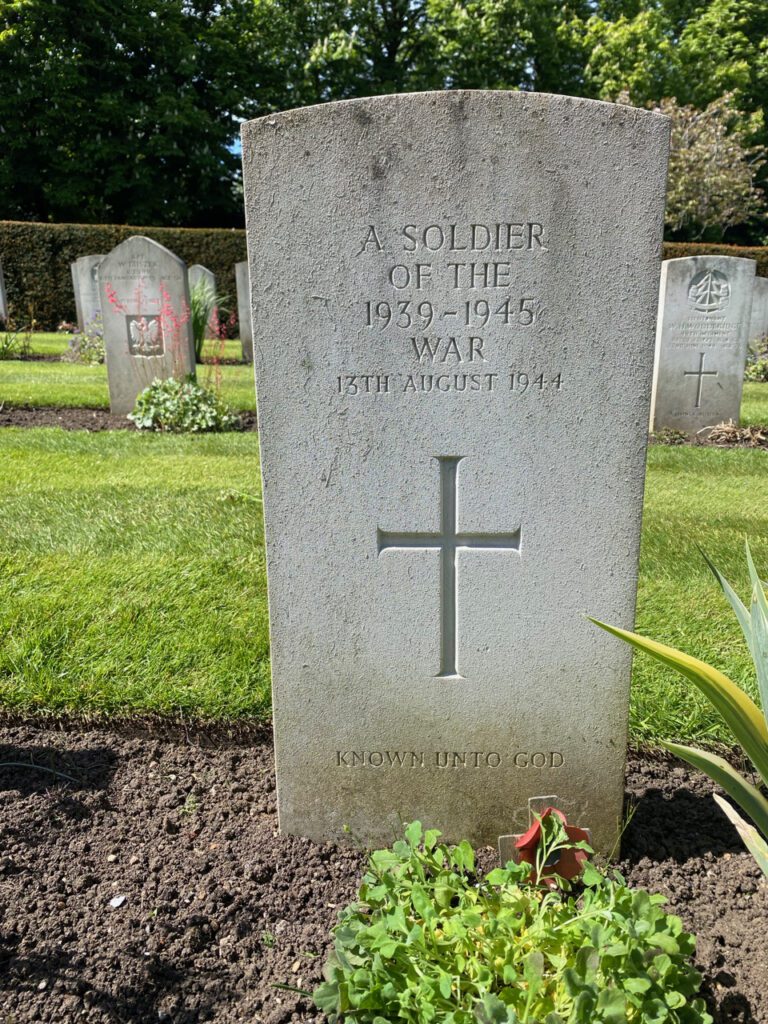
This stone bears the Kipling phrase, ‘KNOWN UNTO GOD’. For though the body is here, his name is unknown. Dick takes up the story. ‘I know a lot about this man but just not his name. He entered the casualty chain on midnight 1st August 1944 with a head injury, was operated on by one of the mobile front line surgical units and was flown back to the UK and brought to St Hugh’s Hospital with another casualty, both unconscious, both with ID on them. The other guy recovered enough to speak and they addressed him with the information on his card and he said, “that’s not me”. However as it turned out he was the person named on the other card, so everyone assumed the ID’s had been swapped by mistake. So they contacted what they thought were the other family, but when the mother arrived and saw him she announced that this was not her son. The following day he died. St Hugh’s has an archive – and he is in a file called Soldier X . There is lots of information there, two post-mortems, we know his height, weight, scars, all sorts. There’s even a photograph of Soldier X. So I am still hoping with modern technology of facial recognition we will be able to find out who he was.’ I hope so too.
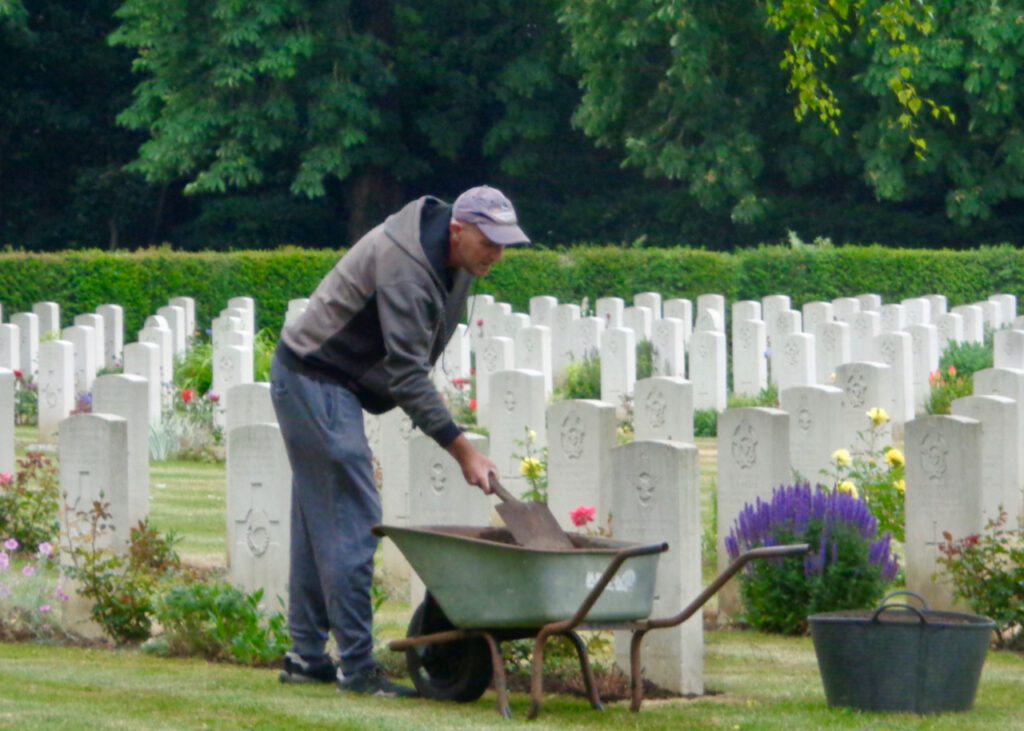
Photograph ©Commonwealth War Graves
Willy Young, has been working as a gardener for the CWGC at Botley for over 30 years.
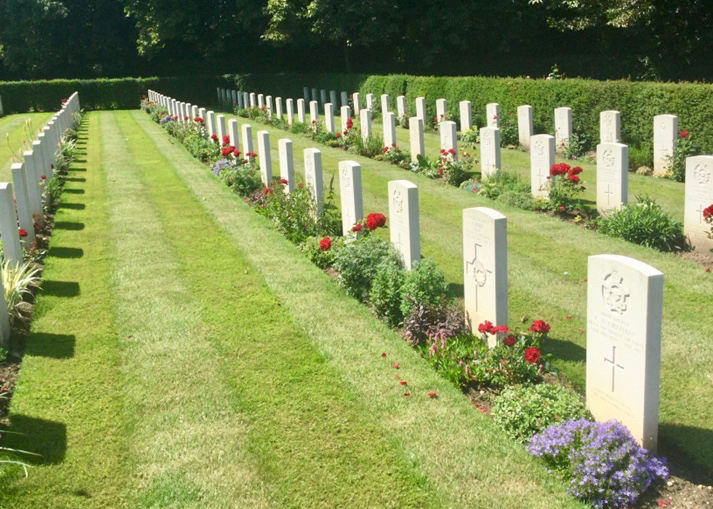
Photograph ©Commonwealth War Graves
Botley war graves in the summer when the roses are in full bloom.

Photograph ©Commonwealth War Graves
The Stone of Remembrance, designed by Edwin Lutyens, uses an architectural technique devised for Classical temples. Known as entasis, the Stone’s edges are subtle convex curves that create an optical illusion of imposing scale and strength. It weighs in at ten tons and uses one solid piece of Portland stone.
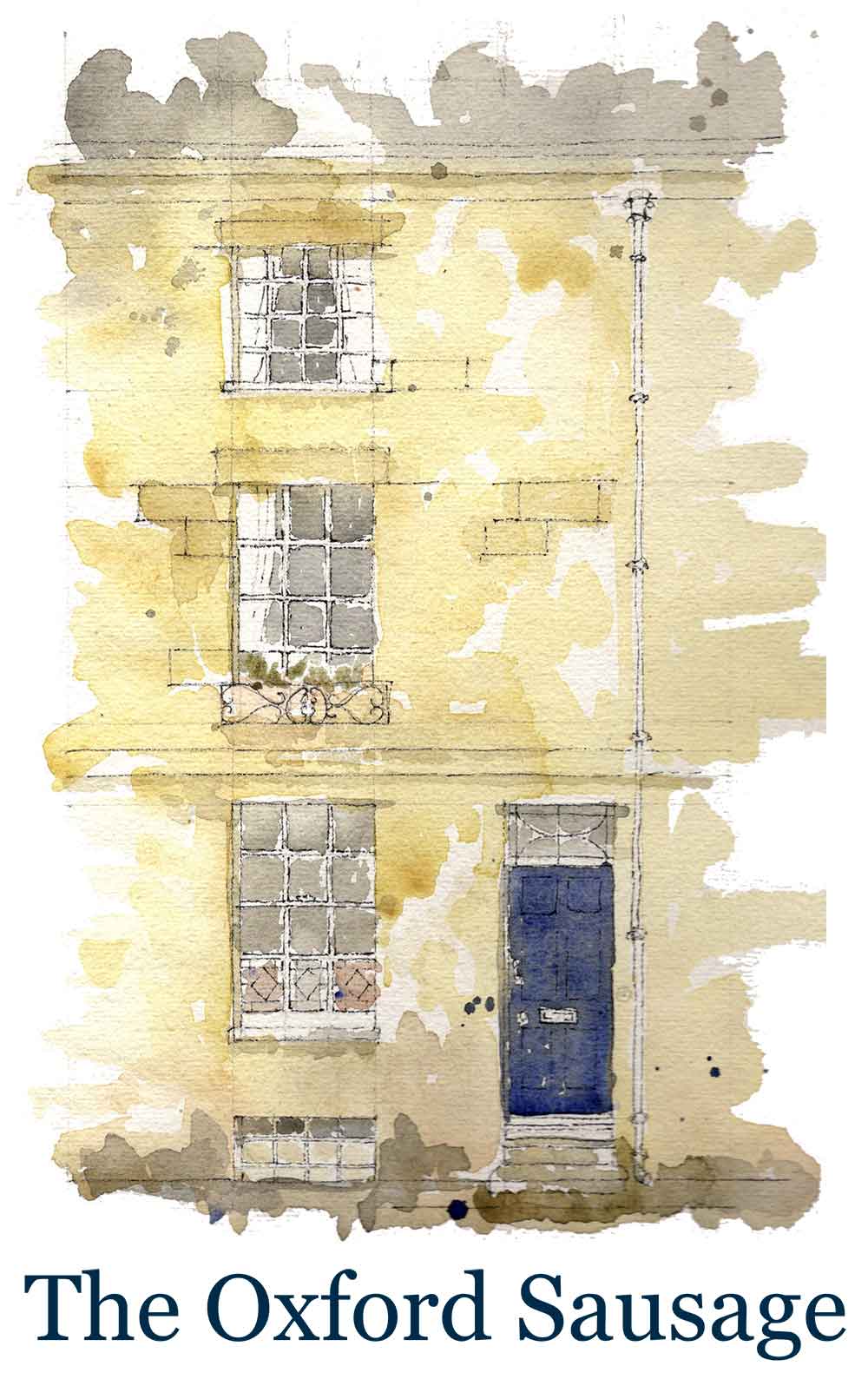

3 Comments
Join the discussion and tell us your opinion.
The quotation on the headstone of T. Lagos, the Private in the Greek army who died in Oxford on 18 October 1944) is from Pericles’ funeral oration as recorded by Thucydides. It is in Greek lettering “ΑΝΔΡΩΝ ΕΠΙΦΑΝΩΝ ΠΑΣΑ Η ΓΗ ΤΑΦΟΣ” (“The whole earth is the tomb of famous men”). This war cemetery in Botley is well worth a visit
Lovely piece. Must visit. Maria and I love to inspect the graves behind the church at South Hinksey. Interesting that Italians and Germans are also buried there. They would probably be from the prisoner of war camp near Blackbird Leys, where the Kassam stadium is now. Maria’s father was one of the esteemed residents.
Today was my first opportunity to visit the cemetery, having read your blog, and I’m so pleased I did. I’d never had come across it otherwise, so thank you. A question: do you know what those 2 metal bell shaped objects are at the entrance?